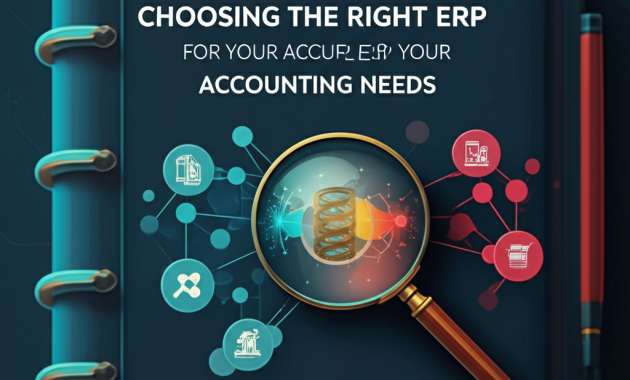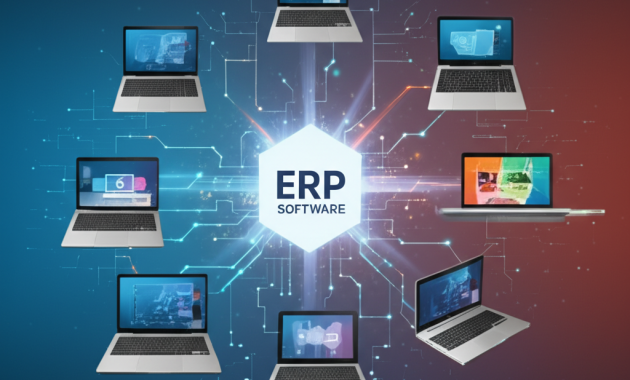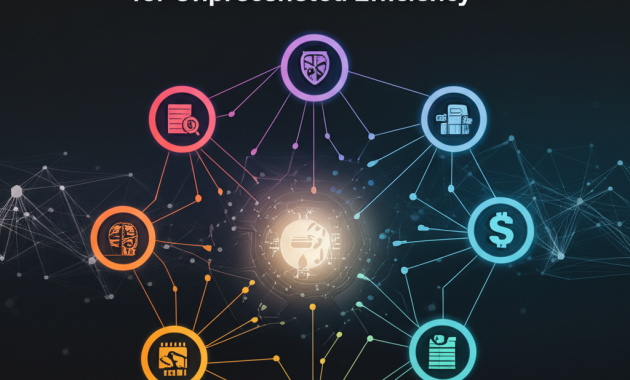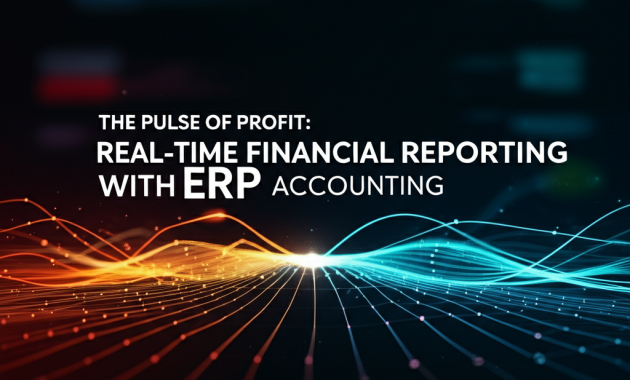In the dynamic landscape of modern business, data is king, and precision is paramount. For accounting and finance departments, this truth is amplified. Gone are the days of disparate spreadsheets, manual reconciliations, and isolated systems struggling to keep pace with the velocity of transactions. Enter Enterprise Resource Planning (ERP) systems – powerful, integrated software solutions that have become the central nervous system for organizations, fundamentally transforming how financial operations are managed, analyzed, and leveraged for strategic advantage.
While ERP systems span various business functions, their impact on accounting and finance is profound and arguably their most critical contribution. More than just a glorified accounting software, an ERP system provides a holistic, real-time view of an organization’s financial health, empowering finance professionals to move beyond mere record-keeping to becoming true strategic partners in decision-making.
What Exactly is an ERP System? A General Overview
At its core, an ERP system is a suite of integrated software applications that manage and automate core business processes across an entire organization. Imagine a single, unified database that collects, processes, and stores data from various departments – sales, purchasing, inventory, manufacturing, human resources, and, crucially, finance.
Historically, businesses operated with standalone systems for each function. Sales would use one system, inventory another, and accounting yet another. This led to "data silos," where information was fragmented, inconsistent, and difficult to share, resulting in manual data entry, errors, delays, and a lack of consolidated visibility.
ERP emerged to solve these challenges by providing a single source of truth. When an order is placed (sales module), it automatically triggers updates in inventory (inventory module), generates an invoice (finance module), and initiates shipping (logistics module). All these interconnected activities are recorded in real-time within the unified database, accessible to authorized users across the organization.
The Indispensable Role of ERP in Accounting and Finance
For accounting and finance professionals, ERP systems are not just helpful; they are indispensable. They provide the infrastructure for accurate, timely, and compliant financial operations, transforming the finance department from a cost center into a strategic value driver.
Here’s how an ERP system specifically revolutionizes accounting and finance:
1. Centralized Financial Data and the General Ledger
The heart of any ERP’s financial module is the General Ledger (GL). This is where all financial transactions are ultimately recorded and summarized. An ERP ensures that every transaction originating from other modules (e.g., a sale from the sales module, a purchase from the procurement module, a payroll entry from HR) flows seamlessly and automatically into the GL.
- Real-time Updates: As soon as a transaction occurs anywhere in the system, its financial impact is immediately reflected in the GL. This eliminates delays associated with batch processing or manual updates.
- Single Source of Truth: With all financial data residing in one central repository, discrepancies are minimized, and data integrity is maximized. There’s no longer a need to reconcile figures from multiple, potentially conflicting sources.
- Automated Journal Entries: Many routine transactions are automatically posted to the GL, reducing manual effort and the risk of human error.
2. Streamlined Core Financial Processes
ERP systems automate and integrate the fundamental financial workflows:
- Accounts Payable (AP): Manages vendor invoices, payment scheduling, and disbursements. An ERP can automate invoice matching (with purchase orders and goods receipts), route invoices for approval, and facilitate electronic payments, leading to faster payment cycles, improved vendor relations, and better cash management.
- Accounts Receivable (AR): Handles customer invoicing, cash receipts, and collections. ERP systems automate invoice generation, send payment reminders, apply cash to outstanding invoices, and provide insights into customer payment behavior, accelerating cash inflow and reducing bad debt.
- Fixed Assets Management: Tracks and manages the entire lifecycle of a company’s fixed assets, from acquisition to depreciation and disposal. This ensures accurate valuation, compliance with accounting standards (e.g., IFRS, GAAP), and optimized tax planning.
- Cash Management and Bank Reconciliation: Provides real-time visibility into an organization’s cash position. ERP systems can integrate directly with bank accounts, automate bank reconciliations, manage liquidity, and facilitate cash flow forecasting, which is critical for operational stability and strategic investments.
3. Enhanced Financial Reporting and Analytics
One of the most significant benefits of ERP for finance is its robust reporting capabilities. With all data consolidated, finance professionals can generate comprehensive reports with unprecedented speed and accuracy.
- Standard Financial Statements: Instantly generate balance sheets, income statements, and cash flow statements, often with drill-down capabilities to view underlying transactions.
- Customizable Reports: Users can create tailored reports to meet specific analytical needs, such as departmental spending, product profitability, customer lifetime value, or regional performance.
- Dashboards and KPIs: Modern ERPs offer interactive dashboards that display key performance indicators (KPIs) in real-time, providing quick insights into financial health, operational efficiency, and strategic progress.
- Consolidation: For multi-entity or global organizations, ERPs automate financial consolidation across different legal entities, currencies, and accounting standards, simplifying complex reporting requirements.
4. Robust Internal Controls and Compliance
Compliance with regulatory requirements (like Sarbanes-Oxley Act – SOX, GDPR, IFRS, GAAP) is a non-negotiable for finance departments. ERP systems are designed with strong internal controls to ensure data integrity and prevent fraud.
- Audit Trails: Every transaction and system activity is timestamped and recorded, providing an immutable audit trail that details who did what, when, and where. This is invaluable for internal and external audits.
- Segregation of Duties (SoD): ERPs enforce SoD by assigning specific roles and permissions to users, preventing a single individual from controlling an entire process (e.g., preventing the same person from creating a vendor, approving an invoice, and processing payment).
- Automated Workflows and Approvals: Critical financial processes are often built with multi-level approval workflows, ensuring that transactions are reviewed and authorized by appropriate personnel before execution.
- Data Security: ERP systems employ robust security measures to protect sensitive financial data from unauthorized access, cyber threats, and data breaches.
5. Budgeting, Forecasting, and Performance Management
Beyond historical reporting, ERP systems empower finance to look forward.
- Budgeting: Facilitate the creation, approval, and management of departmental and organizational budgets.
- Forecasting: Use historical data and current trends to generate accurate financial forecasts, helping management anticipate future performance and make proactive adjustments.
- Variance Analysis: Automatically compare actual financial results against budgets and forecasts, identifying variances and enabling corrective actions. This allows finance to analyze profitability by product, service, customer, or department.
6. Tax Management
ERP systems can be configured to manage various tax regulations, automate tax calculations, and generate tax reports, simplifying compliance with local, state, federal, and international tax laws.
Benefits Beyond the Core Functionalities
The integration capabilities of ERP bring several overarching benefits to accounting and finance:
- Improved Efficiency: Automation of routine tasks significantly reduces manual effort, freeing up finance professionals for more analytical and strategic work.
- Reduced Errors: Automation minimizes human error, leading to more accurate financial statements and reduced reconciliation efforts.
- Enhanced Visibility: Real-time data provides unparalleled insight into the financial health of the organization, enabling timely and informed decision-making.
- Better Decision-Making: Access to comprehensive, accurate, and real-time data allows finance leaders to provide data-driven insights to executive management, supporting strategic planning, investment decisions, and operational improvements.
- Scalability: ERP systems are designed to grow with the business, accommodating increased transaction volumes, new entities, and expanding operations without requiring a complete system overhaul.
- Cost Savings: While implementation can be costly, long-term savings are realized through operational efficiencies, reduced errors, better cash management, and optimized resource allocation.
- Competitive Advantage: Organizations with robust ERP systems can respond faster to market changes, optimize resource allocation, and gain a significant edge over competitors relying on outdated systems.
Implementation Considerations
Implementing an ERP system is a significant undertaking, requiring careful planning and execution. Key considerations for finance departments include:
- Data Migration: Ensuring accurate and complete transfer of historical financial data from legacy systems.
- Customization vs. Standard Features: Balancing the need for specific financial processes with the benefits of sticking to standard ERP functionalities to avoid complexity and high maintenance costs.
- User Training: Ensuring that finance staff are proficient in using the new system and understand its capabilities.
- Integration with Other Systems: While ERP aims for integration, there may still be specific financial tools (e.g., advanced tax software, treasury management systems) that need to seamlessly connect.
- Cost: ERP implementation involves significant investment in software licenses, hardware, customization, and training.
The Future of ERP in Accounting and Finance
The evolution of ERP continues, with new technologies further enhancing its capabilities for finance:
- Cloud ERP (SaaS): The shift to cloud-based ERP solutions is accelerating, offering greater accessibility, lower upfront costs, automatic updates, and enhanced scalability.
- Artificial Intelligence (AI) and Machine Learning (ML): AI and ML are being integrated to automate tasks like invoice processing, expense categorization, fraud detection, and predictive analytics for cash flow and budgeting.
- Blockchain: While still emerging, blockchain has the potential to enhance transparency, security, and traceability in financial transactions, particularly in areas like supply chain finance and intercompany settlements.
- Robotic Process Automation (RPA): RPA bots can automate repetitive, rule-based financial tasks, further improving efficiency and reducing human error.
- Advanced Analytics and Business Intelligence (BI): ERPs are increasingly incorporating sophisticated BI tools, allowing finance professionals to delve deeper into data for predictive modeling and strategic insights.
Conclusion
ERP systems are no longer a luxury but a fundamental necessity for modern accounting and finance departments. They transform fragmented data into actionable intelligence, manual processes into automated workflows, and reactive reporting into proactive strategic insights. By providing a unified, real-time view of an organization’s financial health, ERP empowers finance professionals to ensure compliance, optimize performance, and drive sustainable growth. In essence, an ERP system elevates the finance function from a necessary operational cost to a powerful strategic partner, indispensable for navigating the complexities of today’s global economy.



